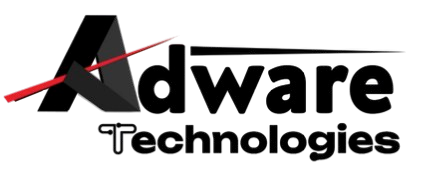The digital landscape is constantly evolving, and with it, so does the realm of web design. As technology advances and user preferences shift, staying up-to-date with the latest web design trends is crucial to create captivating and user-friendly online experiences. In this blog post, we'll explore the current web design trends that are shaping the way we interact with websites and provide insights into how you can incorporate them to make a lasting impact.
1. Minimalistic and Clean Design:-
Less is more. Minimalistic web design focuses on simplicity, clear layouts, and ample white space. This trend enhances user focus and engagement by eliminating clutter and distractions, allowing key content to shine. A clean design also enhances mobile responsiveness, ensuring seamless experiences across devices. At its core, minimalistic design is about distilling a website's elements to their most essential form. By removing unnecessary clutter, distractions, and extraneous embellishments, you create a harmonious and focused visual environment that guides users seamlessly through their journey. Typography plays a pivotal role in minimalistic design. The choice of fonts, sizes, and spacing should be deliberate, conveying hierarchy and guiding users' eyes effortlessly. Crisp, legible text not only communicates effectively but also contributes to the overall aesthetic. Minimalistic design often employs a limited color palette with high contrast. Bold color choices and judicious use of color can create visual impact, highlight important elements, and evoke emotions. This simplicity in color also facilitates accessibility and ensures a cohesive design.
2. Dark Mode Brilliance:-
Dark mode isn't just a design fad; it enhances readability in low-light environments and conserves device battery life. With more platforms offering dark mode options, consider implementing this trend to provide users with a stylish and functional browsing experience. Dark mode, originally developed to reduce eye strain in low-light environments, has evolved into a design choice that extends beyond practicality. It's now a sophisticated aesthetic option that can elevate the overall user experience and make a bold statement. One of the primary reasons for the popularity of dark mode is its positive impact on readability. Dark backgrounds with light text reduce the contrast between screen elements, making it easier on the eyes, particularly in dimly lit surroundings. Users can browse for longer periods without experiencing visual fatigue. As dark mode gains popularity on various platforms and devices, offering this option on your website ensures a consistent experience for users who prefer dark mode. This adaptability enhances user satisfaction and demonstrates your commitment to catering to diverse preferences.
3. Microinteractions for Engagement:-
Microinteractions are subtle animations or visual cues that respond to user actions. They add an element of delight and engagement to the browsing experience. From button hover effects to loading animations, incorporating microinteractions can make your website more interactive and user-friendly. Microinteractions are the tiny, often unnoticed animations and responses that occur when users interact with a website. From a simple button hover effect to a reassuring confirmation message, these micro moments add a layer of interactivity that communicates responsiveness and guides users through their journey. Microinteractions grab users' attention and encourage exploration. When elements respond to user actions, curiosity is piqued, driving users to interact further. These small surprises keep users engaged and invested in the experience. Microinteractions provide valuable feedback to users. They confirm that an action has been successfully completed, reducing uncertainty and frustration. For example, a "like" animation on a social media post confirms user input and creates a satisfying loop of action and response.
4. 3D Elements and Depth:-
Adding depth to web design through 3D elements and effects creates a more immersive experience. This trend adds visual interest and can help communicate complex ideas or products more effectively. However, it's essential to strike a balance to ensure a fast-loading website. While flat design has dominated web aesthetics for years, 3D elements are breaking new ground. 3D design introduces depth, realism, and dynamism, enabling websites to mimic real-world interactions and engage users on a more visceral level. 3D design creates the illusion of depth, making elements appear to have volume and occupy space. Shadows, lighting, and perspective contribute to a sense of realism, immersing users in a more lifelike digital environment. 3D elements invite users to interact in ways that traditional flat design cannot. From interactive product rotations to animated storytelling, 3D elements encourage engagement and keep users exploring and interacting with your content.
5. Typography Takes Center Stage:-
Bold, creative typography is gaining momentum as a powerful design element. Large, expressive fonts can convey emotion, personality, and brand identity effectively. Pairing contrasting fonts and experimenting with typography can add a unique flair to your website's design. Typography is more than selecting fonts – it's about visual communication. The typefaces you choose, their sizes, spacing, and arrangement all contribute to how users perceive and interact with your content. Typography sets the tone and guides users through your website's narrative. Different typefaces evoke distinct emotions. Playful fonts convey a sense of whimsy, while elegant serifs exude sophistication. Typography allows you to infuse your brand's personality and emotions into your website, creating a deeper connection with your audience. Typography trends are constantly evolving. Currently, variable fonts, artistic and handwritten fonts, and maximalist typography (using bold, contrasting fonts) are gaining popularity. Staying attuned to these trends allows you to create modern and visually appealing designs.
6. Neumorphism: The Modern Skeuomorphism:-
Neumorphism is a design style that blends minimalism with skeuomorphism, creating elements that appear slightly raised or embossed. This technique adds a tactile and futuristic feel to the design while maintaining a clean and modern aesthetic. Neumorphism, a blend of "new" and "skeuomorphism," introduces a fresh take on realism in design. It employs subtle shadows and highlights to create elements that appear to be slightly raised or embossed, mimicking the feel of physical objects in a digital space. Neumorphism adds depth and texture to flat designs, infusing them with a tactile quality. The soft shadows and gentle highlights create a sense of realism, inviting users to interact and explore the elements on the screen. Neumorphism retains the clean lines and simplicity of modern design. It doesn't rely on excessive ornamentation but rather focuses on creating an elegant and minimalist visual language that draws attention to essential elements.
7. Asymmetry and Broken Grid Layouts:-
Breaking free from the confines of traditional grids, asymmetrical layouts create dynamic and eye-catching designs. This trend adds visual interest and encourages users to explore the content in a more engaging way. Asymmetry in web design involves purposefully deviating from the standard grid structure to create a layout that is visually unbalanced yet harmoniously composed. This departure from symmetry sparks intrigue, encourages exploration, and challenges traditional design norms. Broken grid layouts inject energy and movement into a website. By placing elements off-center or overlapping, designers introduce a sense of motion that captivates users and guides their gaze along a non-linear visual journey. Asymmetrical designs offer a canvas for creativity, allowing designers to experiment with novel compositions, juxtapositions, and layering. This freedom empowers brands to differentiate themselves and showcase their personality in an unforgettable manner.
8. Inclusive and Accessible Design:-
Accessibility is no longer an option—it's a necessity. Designing with accessibility in mind ensures that your website is usable by all, including those with disabilities. Incorporating alt text for images, ensuring proper color contrast, and providing keyboard navigation options are some ways to create an inclusive online experience. Inclusive and accessible design aims to create digital experiences that are open to all individuals, regardless of their abilities. It ensures that everyone, including those with disabilities, can navigate, understand, and interact with a website effectively and independently. Designing inclusively extends your website's reach to a wider audience. By accommodating users with varying abilities, you create a more diverse and engaged user base, ultimately contributing to brand loyalty and a positive reputation. Consider a range of disabilities, including visual impairments, hearing impairments, mobility challenges, and cognitive disabilities. Provide alternatives for non-text content, offer keyboard navigation options, ensure clear and readable typography, and avoid design elements that may trigger seizures or sensory overload.
9. Sustainable Design Practices:-
Sustainability extends to the digital realm. Designing with energy-efficient practices, optimizing images and code for faster loading times, and reducing the website's carbon footprint are becoming essential considerations in web design. The digital world isn't exempt from environmental consequences. Every interaction on the web, from data storage to browsing, contributes to energy consumption and greenhouse gas emissions. Sustainable web design aims to mitigate this impact. A well-optimized website loads faster and consumes fewer resources. Minimize HTTP requests, compress images, and utilize caching to reduce server load and enhance the overall speed and efficiency of your website. Optimize images for the web by reducing file sizes without compromising quality. Use modern image formats such as WebP, and consider lazy loading to load images only when they come into view, reducing unnecessary data consumption.
Conclusion:-
In the ever-evolving realm of web design, where innovation and creativity know no bounds, the journey doesn't culminate at a single destination. Rather, it's a continuous exploration of possibilities, a dedication to user-centricity, and an unwavering commitment to delivering captivating and meaningful digital experiences.
As we've ventured through the diverse landscape of web design trends and practices, from the elegance of minimalistic design to the immersive realm of 3D elements, from the subtlety of microinteractions to the boldness of dark mode brilliance, and from the harmony of typography to the inclusivity of accessible design, we've uncovered the threads that weave together the tapestry of exceptional web experiences.
Each design choice, each pixel meticulously placed, contributes to the symphony of interactivity, engagement, and communication that defines the modern digital landscape. From the symmetrical to the asymmetrical, the minimalist to the intricate, the accessible to the sustainable, every decision shapes the user's journey, guiding them through a captivating narrative that speaks volumes without saying a word.
For more information: Web Development Company




Comments (0)